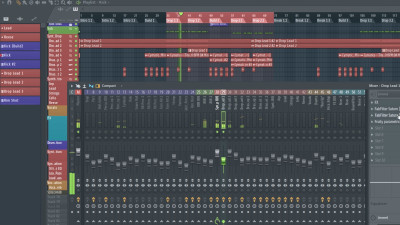

Now select a spot on your track where the volume is the loudest, and has every instrument playing at the same time. It could take a few hours, or a few days, to get your track to sound the way you want.

For that mixer track, add the effect “Maximus.” (Make sure to silence the Fruity Limiter on the master channel.) Select the “Default” setting for Maximus, and keep in mind that mastering, like mixing, isn’t something to be rushed. When you drop a beat to your FL Studio playlist, add it to a mixer track. To begin mastering with FL Studio 12, a preferred tool is Maximus. Mixing is adding all tracks to the mixer and leveling all volumes. Mastering is making the track as loud as possible without “clipping,” while still trying to maintain the dynamic range of the song. What is mastering? In FL Studio, mastering is leveling the sound of any audio file, preferably an instrumental.


 0 kommentar(er)
0 kommentar(er)
